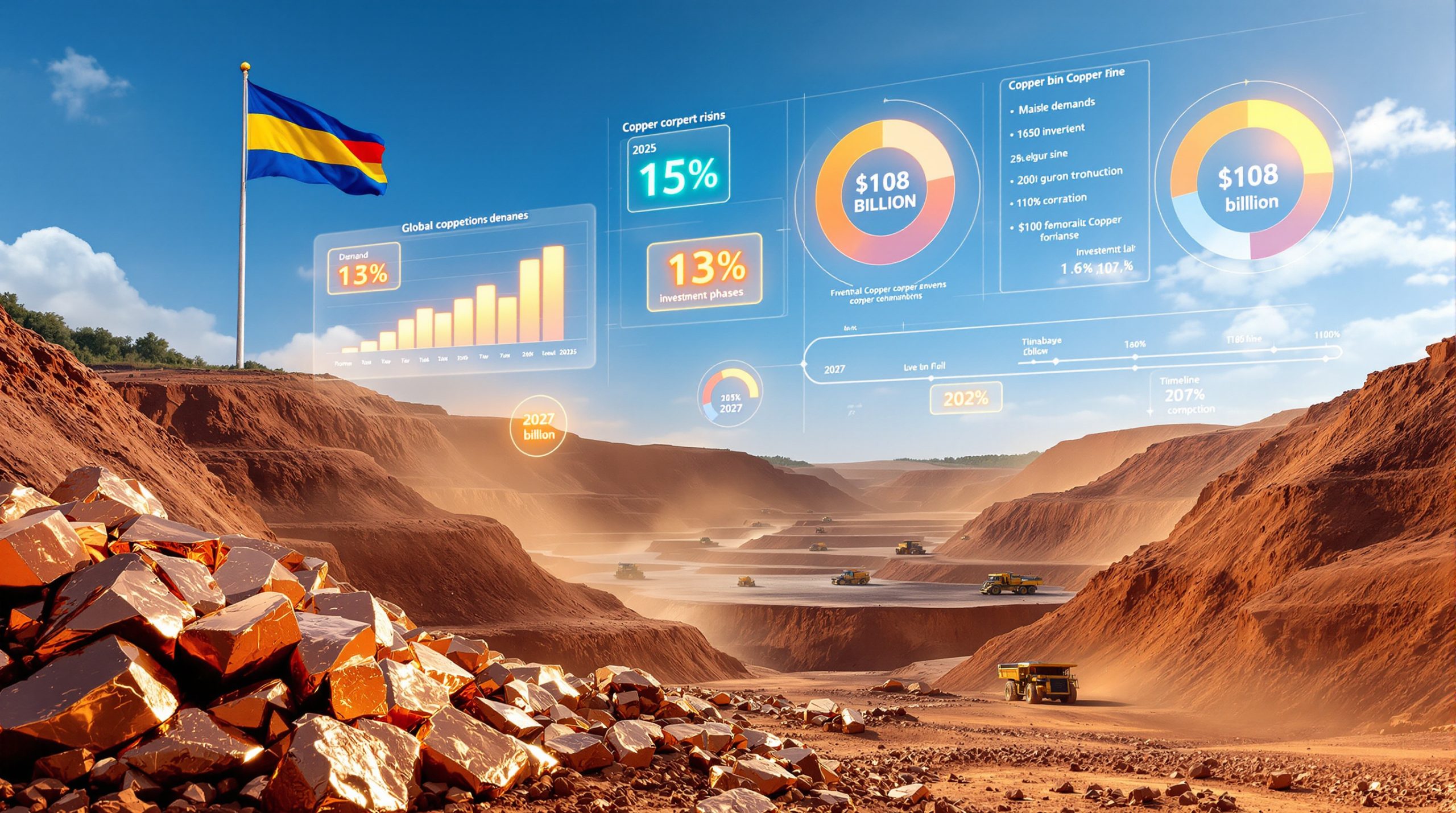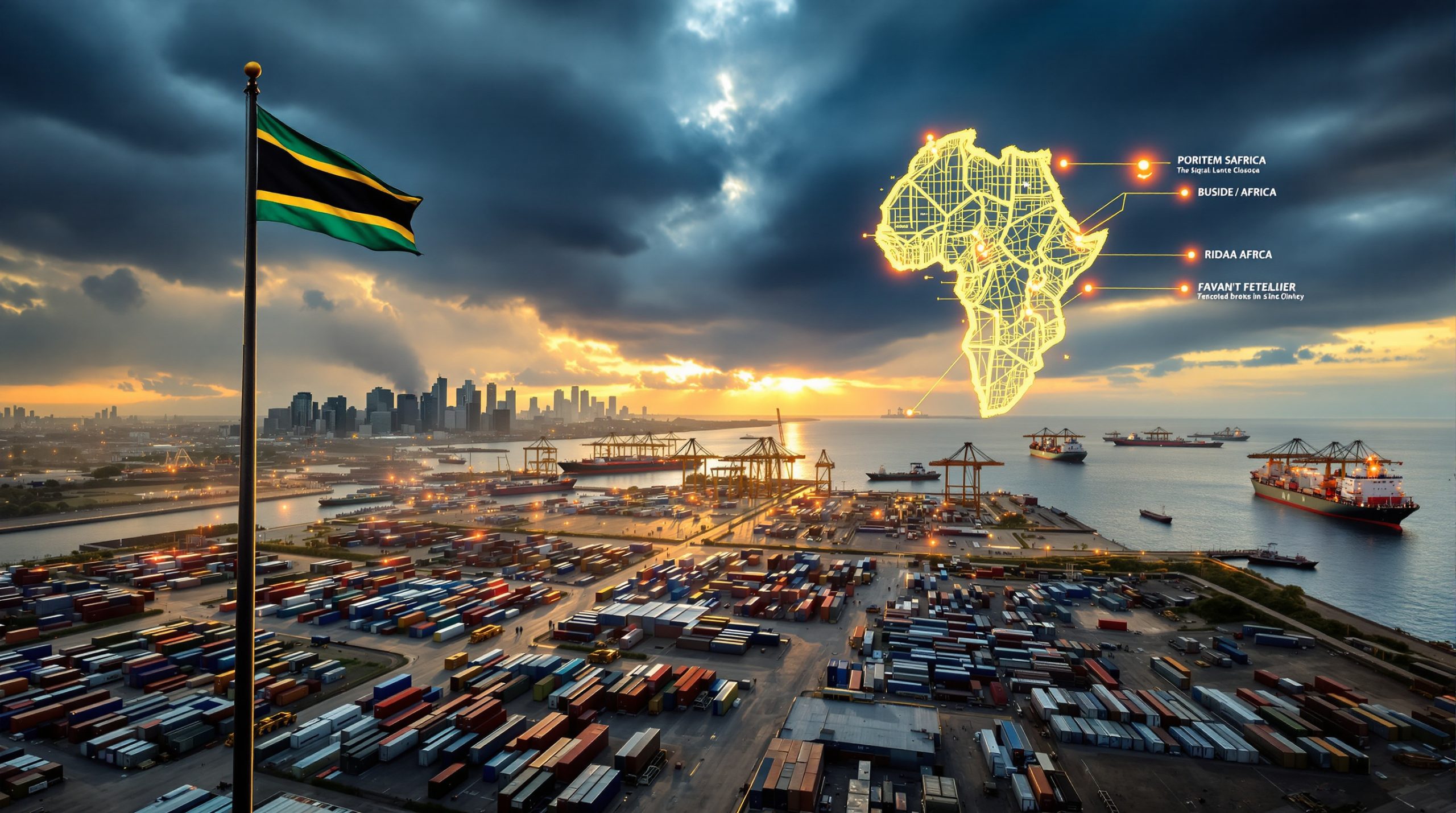Understanding Africa's Premier Mining Investment Platform
The Investing in African mining Indaba represents the continent's most significant convergence of global capital and resource opportunities. As commodity markets recalibrate and investors seek long-term resilience, this annual gathering has evolved into the primary nexus where Africa's geological wealth encounters international dealmakers and strategic capital.
Investing in African mining Indaba continues to attract global attention.
Event Infrastructure and Scale:
| Metric | 2026 Data |
|---|---|
| Expected Attendees | 10,500+ delegates |
| Geographic Reach | 50+ African countries |
| Investment Focus Areas | Critical minerals, gold, battery metals |
| Annual Deal Flow Value | $2.8 billion+ |
Source: Mining Indaba Official Statistics, 2026
The event's strategic positioning reflects broader market dynamics. Furthermore, Africa's resource endowment increasingly attracts sophisticated institutional capital. Mining companies, ranging from exploration-stage ventures to established producers, utilise this platform to access funding, forge partnerships, and execute strategic transactions that shape continental mining development.
The Investment Village Ecosystem
The Investment Village functions as a sophisticated marketplace where capital deployment mechanisms operate through carefully structured engagement zones. This curated environment facilitates direct connections between funding sources and resource opportunities across multiple risk profiles and investment horizons.
Exploration Showcase features 40+ early-stage companies with market capitalisations below $20 million. These ventures typically hold prospective ground in underexplored geological terranes across the continent.
Junior Mining Hub accommodates 17 development-stage miners presenting African assets at various stages of advancement. These companies have defined resources and completed feasibility studies. For instance, further junior mining insights are shared during dedicated sessions.
Private Investment Lounges provide exclusive environments for institutional capital deployment discussions. Consequently, these spaces facilitate confidential negotiations between mining executives and funding sources.
Structured Investor Programming delivers targeted sessions designed specifically for capital allocators. In addition, these sessions offer market intelligence and access to emerging commodity opportunities across African jurisdictions.
Capital Deployment Mechanisms
Investment flows through Mining Indaba operate via multiple channels that accommodate different capital requirements and risk tolerances. Venture capital firms targeting early-stage exploration projects utilise the platform to identify promising geological prospects before institutional recognition drives valuations higher.
Private equity investors focus on development-stage assets requiring growth capital to advance toward production. These opportunities typically involve companies with proven resources and secured development financing.
Strategic investors, including major mining companies and commodity trading houses, leverage the event to identify acquisitions, joint ventures, or off-take agreements that align with their strategic goals.
The next five years will reward investors who conduct thorough research and maintain disciplined investment approaches across African mining opportunities.
Source: Mining industry analysis based on commodity market trends
Critical Minerals and Battery Metals Drive Investment Interest
Africa's geological endowment positions the continent as a critical supplier of minerals essential for global energy transition. Lithium, cobalt, and nickel deposits attract increasing capital. In addition, investors are aware of the transformative critical minerals transition projects enhancing long-term value.
Battery Metals Revolution
Lithium extraction projects gain momentum in Zimbabwe and Namibia, where hard-rock pegmatite deposits offer high-grade resources. Moreover, recent discoveries in these regions demonstrate significant resource potential. Notably, developments in these areas echo themes raised in a recent namibia uranium update report.
Cobalt operations continue expanding in the Democratic Republic of Congo, which controls approximately 70% of global cobalt supply. Despite regulatory complexities, the resource quality and scale maintain investor interest.
Furthermore, nickel developments accelerate in Madagascar and Botswana, providing diversified supply alternatives to traditional markets.
Traditional Commodities with Modern Applications
Gold market dynamics reflect long-term price appreciation expectations, driving renewed institutional interest in African gold assets. Moreover, sophisticated gold market strategies now guide investor decisions.
Regions such as West African orogenic belts deliver high-grade discoveries; for instance, exploration successes in Ghana, Mali, and Burkina Faso continue to reinforce the continent’s reputation.
Southern African reef systems offer large-scale, long-life opportunities, while East African greenstone terranes represent emerging prospects.
Silver Supply Constraints Create Investment Opportunities
Tightening global silver supply conditions create compelling investment opportunities for African silver producers. Industrial demand for silver, particularly in solar panel manufacturing and electronics production, continues growing. Consequently, silver operations in Morocco, South Africa, and Namibia benefit from diversified revenue streams and reduced exposure to price volatility.
Commodity Investment Analysis:
- Uranium: Term-based pricing model – Namibia's production leadership – Regulatory complexity
- Gold: Nominal price appreciation – Diverse geological provinces – Jurisdictional risk
- Silver: Supply tightening – By-product opportunities – Demand sensitivity
- Copper: Infrastructure demand – Zambian Copperbelt expertise – Price volatility
- Lithium: Energy transition growth – Zimbabwe's resource quality – Processing challenges
Uranium Sector Structural Advantages
The uranium sector demonstrates unique structural characteristics that distinguish it from other commodity investments. Term-based pricing models allow producers to secure 30-year supply contracts with credit-worthy nuclear utilities. As a result, revenue certainty is achieved that is unavailable in spot markets.
Namibia's uranium production benefits from established infrastructure, a skilled workforce, and a supportive regulatory environment. Desert mining operations in the region employ advanced extraction technologies that minimise environmental impact, all while maintaining competitive cost structures.
Junior mining companies also participate in long-term supply agreements. This contracting structure reduces project financing risk and improves investment returns predictability.
Junior Mining Investment Dynamics
Junior mining companies represent the highest-risk, highest-reward segment within African mining. These ventures offer significant upside leverage to commodity price movements, while still requiring sophisticated due diligence.
Development Stage Opportunities
Pre-production assets with defined resources give investors exposure to operational transition catalysts. These companies typically have completed feasibility studies, secured permits, and identified funding pathways toward production commencement.
Moreover, permitting and regulatory advancement creates value inflection points.
Exploration Stage Prospects
Investors gain ground-floor entry opportunities by tapping early-stage discoveries. Such investments require sophisticated geological assessments and long-term commitment. Consequently, these assets present significant upside leverage during favourable market conditions.
For a comprehensive view, refer to further junior mining insights on early-stage opportunities.
Investing in African mining Indaba proves instrumental in providing a platform for both established entities and emerging ventures.
Due Diligence Framework:
- Technical: Resource quality, geological confidence, mining method optimisation
- Financial: Capital requirements, operating cost projections, funding pathway
- Legal: Permit status, ownership structure, regulatory compliance
- Environmental: Impact assessments, mitigation strategies, community relations
- Management: Track record, technical expertise, execution capability
Geopolitical Factors Influencing Investment Flows
African mining investment unfolds within complex geopolitical environments. Regulatory stability, infrastructure development, and international relations significantly influence capital allocation decisions and project economics.
Furthermore, sophisticated risk assessment and mitigation strategies are essential for navigating these challenges.
Regulatory Environment Evolution
Modernisation of mining codes across multiple African jurisdictions creates predictable investment frameworks. Countries like Ghana, Botswana, and Morocco have implemented investor-friendly reforms. Consequently, streamlined permitting processes and transparent taxation structures now reduce uncertainty, enabling accurate project scheduling and financing.
Additionally, foreign investment protection mechanisms, including bilateral treaties and international arbitration access, further reduce political risk exposure.
Infrastructure Development Impact
Transport and logistics improvements significantly impact mining project economics. For instance, rail network expansions reduce operating costs by connecting mining regions to export ports.
Likewise, developments in the power grid reduce energy costs. Renewable energy integration is becoming increasingly popular, as these systems offer both cost-competitiveness and reduced environmental impact.
Investments in digital infrastructure, including remote monitoring and automation, further enhance operational efficiency.
ESG Integration in African Mining Investment
Environmental, Social, and Governance considerations are now critical to investment decisions. Institutional investors demand comprehensive ESG compliance, while regulatory authorities enforce stricter standards.
In addition, mining companies implement measures to secure sustainable capital allocations.
Environmental Stewardship Requirements
Key initiatives include:
- Carbon footprint reduction strategies: Adoption of renewable energy, energy efficiency programmes, and carbon offset initiatives.
- Water management programmes: Advanced water recycling systems and groundwater protection measures.
- Biodiversity protection initiatives: Measures for conservation and restoration.
- Waste minimisation practices: Principles of circular economy and waste recovery operations.
Social Impact Measurement
Social metrics play an essential role in demonstrating a positive local impact. Among these are:
- Employment generation: Direct and indirect job creation statistics.
- Skills development: Investment in training programmes and human capital development.
- Infrastructure investment: Community projects and economic upliftment initiatives.
Governance Standards
Enhanced governance protocols include:
- Corporate transparency: Regular reporting on operational and financial performance.
- Board diversity: Ensuring independence and effective oversight.
- Anti-corruption programmes: Robust risk management systems to ensure ethical conduct.
Regional Investment Opportunities Across Africa
Africa's diverse geological provinces offer distinct investment opportunities. Each region presents unique advantages and challenges that require targeted evaluation.
West Africa's Gold and Critical Minerals
Investment highlights in West Africa include established infrastructure and favourable geological conditions. Countries like Ghana benefit from decades of gold production expertise and recent lithium discoveries.
In addition, Mali and Burkina Faso offer high-grade gold opportunities despite inherent security challenges.
Southern Africa's Diversified Resource Base
Southern Africa’s strategic advantages include mature mining jurisdictions and advanced technical expertise. South Africa’s mining industry boasts world-class geological knowledge and a highly experienced workforce.
Botswana’s diamond industry and Namibia’s competitive uranium production further underscore the region’s resource diversity.
East Africa's Emerging Opportunities
East Africa is witnessing growth potential in underexplored geological terranes. Tanzania, Ethiopia, and Eritrea now present early-stage opportunities as infrastructure development programmes and regional economic integration improve market access and operational efficiency.
Strategic Networking for Investment Success
Effective participation at Investing in African mining Indaba demands thorough preparation and targeted engagement. Investors are advised to adopt systematic planning strategies to maximise deal flow access and build durable relationships.
Pre-Event Preparation
- Research and targeting: Identify priority companies and projects aligned with specific investment criteria.
- Strategic meeting scheduling: Arrange sessions with key decision-makers during the event.
- Investment criteria documentation: Prepare clear communication on due diligence and transaction structures.
On-Site Engagement Tactics
Structured investor sessions provide curated access to selected mining companies. In addition, technical presentations deliver detailed project information that aids informed decision-making.
Private meeting spaces further facilitate confidential discussions about transaction structures and strategic partnerships.
Post-Event Relationship Development
Systematic follow-up is essential to convert initial interactions into substantive evaluations. Effective methods include:
- Additional documentation requests: Access technical reports and financial models.
- Site visits: Conduct detailed operational assessments.
- Management meetings: Deepen relationships with key personnel.
For further updates on event preparations, visit mining indaba updates.
Future Trends Reshaping African Mining Investment
Several transformative trends will reshape African mining investment dynamics over the next decade, creating both opportunities and challenges.
Technology Integration Impact
Digital transformation is revolutionising mining operations. Automated mining systems and remote monitoring capabilities now lead to improved efficiency. Moreover, advancements in AI in mining tech further enhance operational productivity.
Other notable innovations include blockchain-based supply chain tracking, which meets rising consumer and regulatory demands.
Energy Transition Acceleration
Renewable energy integration is becoming increasingly compelling. Solar and wind technologies now achieve cost parity with traditional generation, providing both energy security and environmental benefits.
Furthermore, innovations like grid-scale battery storage, hydrogen fuel cell applications, and carbon capture technologies generate additional revenue streams and support ESG initiatives.
Supply Chain Localisation
Local value addition through in-country processing creates new revenue opportunities. Downstream manufacturing developments and technology transfer partnerships simplify supply chains and reduce transportation costs.
These strategies help capture further value while fostering local economic development. For broader industry perspectives, consider insights from global mining review.
Positioning for Long-Term Success in African Mining Investment
The Investing in African mining Indaba transcends traditional conference formats by creating a comprehensive ecosystem for global capital and resource opportunities. Success in African mining investment requires disciplined research methodologies, strategic relationship development, and rigorous risk assessment.
Over the next decade, the next decade promises significant returns for investors who combine technical expertise with operational patience. In this context, Investing in African mining Indaba serves as the platform where sophisticated capital allocators identify and evaluate generational opportunities.
Investment success factors include thorough due diligence, robust risk management and a strategic long-term perspective. Consequently, the continent's geological wealth, improving regulatory regimes, and expanding infrastructure development create optimal conditions for sustained investment performance.
Investing in African mining Indaba remains central to transforming traditional investment approaches, ensuring that global capital is channelled effectively to underpin Africa's resource-driven growth.
Disclaimer: This article contains forward-looking statements and investment analysis based on current market conditions and trends. All investment decisions should be based on individual due diligence and professional financial advice. Mining investments carry inherent risks, including commodity price volatility, operational challenges, and regulatory changes.
Want to Capitalise on Major Mining Discoveries Before the Market Catches On?
Discovery Alert's proprietary Discovery IQ model delivers instant notifications on significant ASX mineral discoveries, empowering subscribers to identify actionable opportunities ahead of the broader market. Explore how historic discoveries have generated substantial returns by visiting Discovery Alert's dedicated discoveries page and begin your 30-day free trial today to secure your market-leading advantage.




